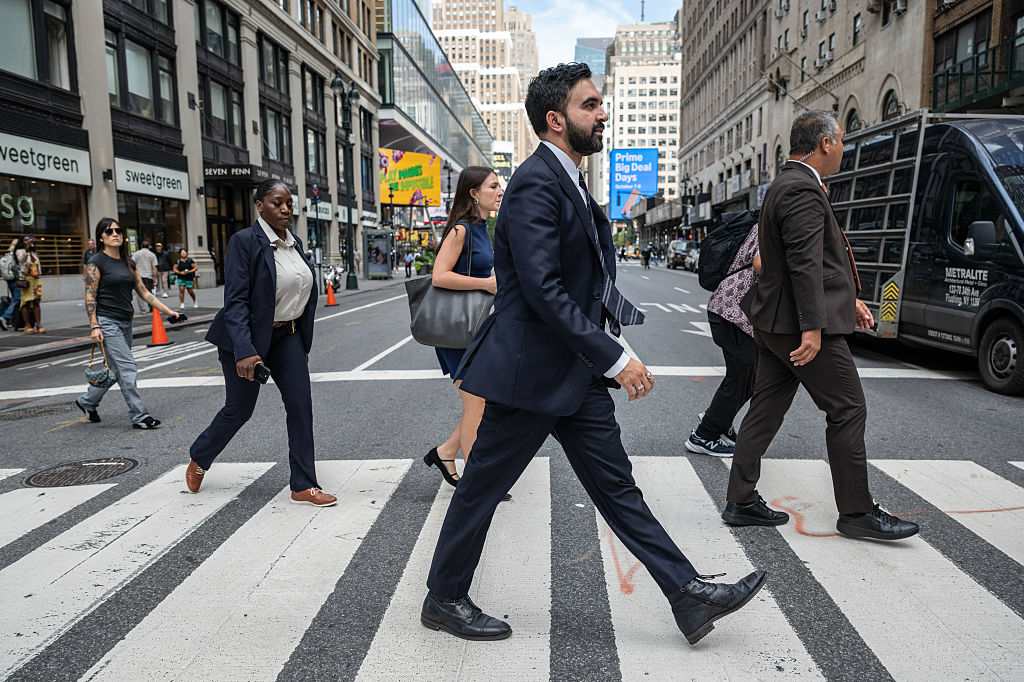Urban development in America has never been just about buildings, budgets, or blueprints. It has always been a reflection of our moral imagination—of what, and whom, we believe cities are for. To understand Zohran Mamdani’s rise, we have to place him within this longer story: the struggle over whether cities should serve capital or justice.
[time-brightcove not-tgx=”true”]
Should urban policy be guided by the cold precision of development economics, or by a vision of fairness and dignity? Are rising rents and deepening exclusion the inevitable byproducts of progress, or the deliberate outcomes of political choices? And if our cities have been built on inequality, are we condemned to live within them as they are, or can we construct something radically different?
Dr. Martin Luther King Jr. once called budgets “moral documents.” They reveal, he argued, not just what a society can afford, but what it values. Policy is never neutral; it is an expression of moral will.
Zohran Mamdani built his New York City mayoral campaign on this principle. And, remarkably, he won.
Mamdani’s victory marks a rupture in a long American tradition. For centuries, urban policy has treated inequality as inevitable, rather than intentional. The industrial city of the 19th century thrived on a brutal calculus: unemployment kept wages low, proximity to the factory ensured control, and the working class was simultaneously desired and despised. Poverty and hunger were not aberrations, they were the consequence of policies. The resulting social ills of crime, disease, and despair were blamed not on the systems that produced them, but on the people who bore their weight. In 1900, for example, the average factory worker’s wage was approximately 20¢ per hour (about $7.71 today). Nearly 20% of the population in industrialized cities lived in poverty at the time. Suffering was not an accident of American urban life; it was its architecture.
In the 20th century, the response to this suffering was not reform but retreat. We fled. From Frank Lloyd Wright’s libertarian utopia of Broadacre City that proposed to give an acre of land to each family and create low density, highway-connected communities away from cities, to the suburban sprawl that promised clean streets and quiet lawns, America sought salvation in escape. Cities became sites of speculation. As sociologist Saskia Sassen has argued, even the city block became a financial product. Downtowns hollowed out, changing from bustling pedestrian oriented urban spaces into Central Business Districts, and working-class neighborhoods were erased. Suburbia offered the illusion of moral purity, deepening social segregation as highways allowed a quick access to and from the city centre. For example, before World War II, only 13% of Americans lived in the suburbs. By 1970, that number had tripled, and by 2010, suburbs were home to over half of the U.S. population.
Mamdani’s vision of an equitable, affordable urbanity emerges as a challenge to this long history of abandonment and exclusion.
Mamdani begins from a simple moral premise: all development is a question of justice. Who bears the burdens of growth, and who enjoys its benefits?
In New York—the city with more billionaires than any other on earth—rent growth has vastly outpaced wage growth. One in three New Yorkers face food insecurity.
Mamdani’s plan to raise city income taxes by 2% on millionaires and shift property taxes toward the wealthiest, whitest, and most under-taxed neighborhoods could generate $4 billion a year to fund affordable housing. It’s not a revolution in arithmetic; it’s a revolution in values. He’s saying what too few politicians dare to: Unaffordability is not fate, it’s policy.
Read more: Zohran Mamdani Could Be New York’s First Citi Bike Mayor
Mamdani’s project insists that justice must be made where we live, not deferred to a distant future or displaced elsewhere. As rising costs drive residents out of New York City—nearly 78,000 people left between July 1, 2022 and July 1, 2023—he’s proposing 200,000 new units of affordable housing and expanded childcare to keep working people in the city. His vision rejects the myth of the clean slate, the American tendency to abandon broken systems rather than repair them. The moral city, he suggests, is not elsewhere. It is here, and it must be made now.
That principle extends to how we move through the city, too. Mamdani’s push for fare-free buses and pedestrian-friendly streets is more than transport policy—it’s a politics of empathy. Public space is where democracy breathes. Cars and private towers isolate; sidewalks and buses connect. To walk is to encounter difference, to share the commons, to witness the city’s inequities up close. Walking, as writers from Mahatma Gandhi to James Baldwin have shown, is both an act of freedom and a measure of justice. It teaches us who we share the city with, and who we have chosen to ignore.
When Mamdani walked the length of Manhattan during his campaign, he wasn’t just canvassing. He was making a statement: that the city belongs to those who move through it, not those who wall themselves off from it. His campaign for fare-free buses and safer streets is, at heart, a campaign for moral proximity, an insistence that justice begins when we encounter one another face to face.
Mamdani’s campaign did more than win an election. It disproved the cynical American belief that moral politics cannot triumph in a pragmatic world. He collapsed the false divide between justice and viability, between idealism and power. His victory offers a new answer to an old American question: Can politics be moral and still win?
Mamdani’s New York City says yes—and in doing so, it dares us to imagine the city anew: not as a marketplace, but as a moral community.

